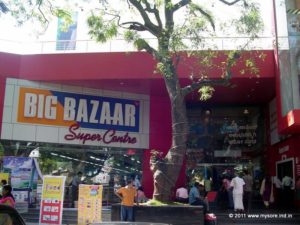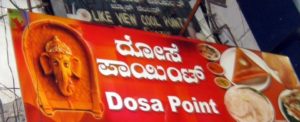
 Scan to see this page on your mobile phone
Scan to see this page on your mobile phoneArguably the very reason why the place was selected as a citadel many centuries earlier could have been influenced by the presence of a lake.
Even the myths related to the origin of this as a capital talk of a temple on the lake side. Though it is much humbler than the rest of the grandiose temples in Mysore Palace, the Kodi Bhairava Temple located on the northeast edge of the palace compound is older than the founding of Wodeyar dynasty. Kodi means barrage or banks of a water body. This temple possibly marked the edge of the erstwhile Doddakere during its live days.
History is a bit sketchy on who built this tank. It is often attributed to the Cholas of Tamil country, under whose influence the region had been for over a century or so, before the Hoysalas of Dwarasamudra ( present day Halebid ), drove the Cholas out from this region. For that reason the lake was also known as Cholakere.
Many centuries later when the palace of Mysore was built in its present fashion, the landscape of the region was considerably different. The Chamundi hill dominated the skyline of the locality as it is even today. Between the foothill and the edges of the bastion of the palace fort was a placid lake. Possibly the biggest lake in Mysore, much bigger than the still surviving Karanji lake and the Kukkarahalli Lake.
Even in the present day shrunk from the surviving two lakes are immensely large. Doddakere was much larger than either even in their original form.
In a panoramic view, its was the imposing Chamundi hills at one shore and the jewel like palace on the other shore.
And when the palace glitters in the night the reflection was something awe inspiring. That sights is lost for ever. The only remainder of that beauty is during the heavy rainy season. The sheet of water that gets logged in the arena of the palace offers that classical reflection of such majestic structures on the edges of water bodies.
Right through the middle of Doddakere was ( and still is!) a road that connected the two.
If you travel from the Mysore Palace area towards Nanjangud (Ooty Road) you'll find the road at an unusual elevation with the surroundings. That's because the whole town scape you see beneath this road on the bund was the lake once up on a time.
Now as you pass the Dasara Exhibition ground on your left, cross the MG Road that passes beneath, ( both of which are also set on the erstwhile Doddakere lake bed ) you'll see an ancient gopura ( pavilion ) on your left. This is just before the drive in restaurant Kamat that will appear on your left. The 'gopura' was in fact a water regulating gate that controlled flow out of the Doddakere. What is astonishing is the architectural beauty with which an otherwise mundane irrigation structure is created.
This structure had to be installed at this location which also happened to be an important area in front of the citadel. A typical structure for this would have jet out like an eyesore in an otherwise majestic landscape dotted my many palatial buildings. So its architectural merit compete with any artefacts that was part of the palace architecture. All you can see of the water gate is the pair of granite slabs on the pavilion with a hole in the middle, through which the mechanism passed. And of course somewhere near by around the corner of the park are a pair of Hero Stones locally known as Virakal. This is memorial stones for warriors who met a heroic death.
Back to the Doddakere's history, the lake was in existence, though shrunk, during the 1930s. The partially dead and stagnated lake was a cause of worry for the health of royal folks as malaria was a major concern. Doddakere was drained.
In his book on Mysore written in 1936 M. Sharma Rao narrates vividly about the visit of Prince Albert Victor, the then Prince of Wales. The prince visited Mysore in 1889 during the regime of Chamaraja Wodeyar X.
The account goes ".....At night there was a banquet in honor of the distinguished visitor. After the banquet was over, His Royal Highness was driven round the city to witness the illuminations. The large tank to the east of the fort known as the Doddakere tank was lighted up by thousands of wicks burning in earthen saucers containing oil. Eight circular basket boats floated over a surface of small rippling waves, their gunwales being picked out with lamps, the reflections of which shimmered down the slowly moving surface of the water. In the center of the lake was a glittering white house built of pith and talc, all one blaze of light......"













